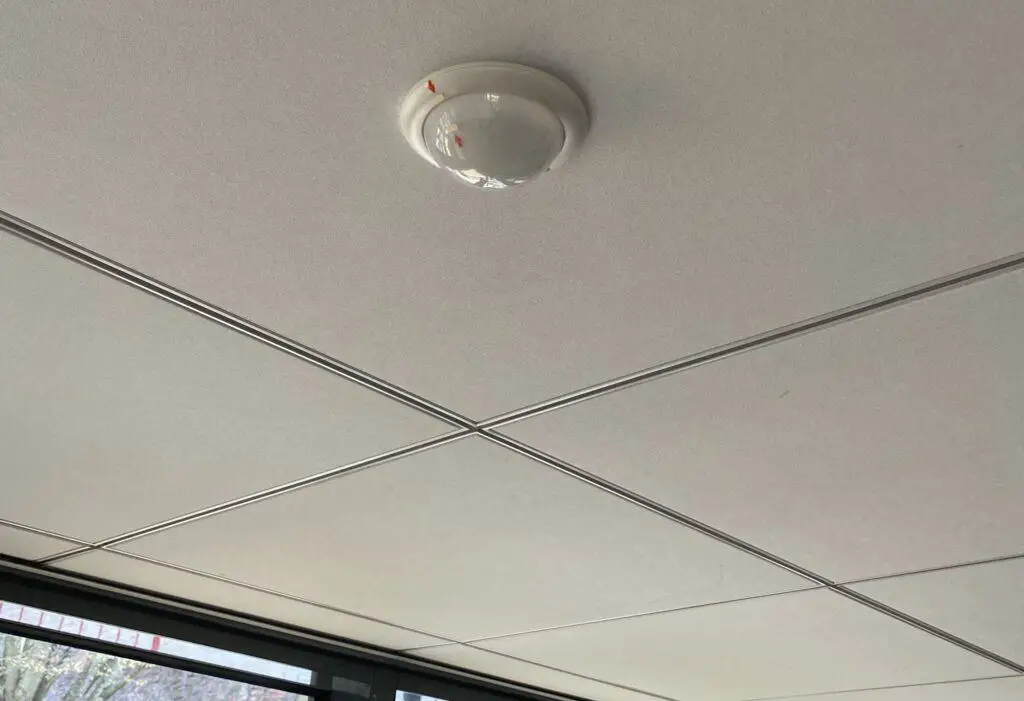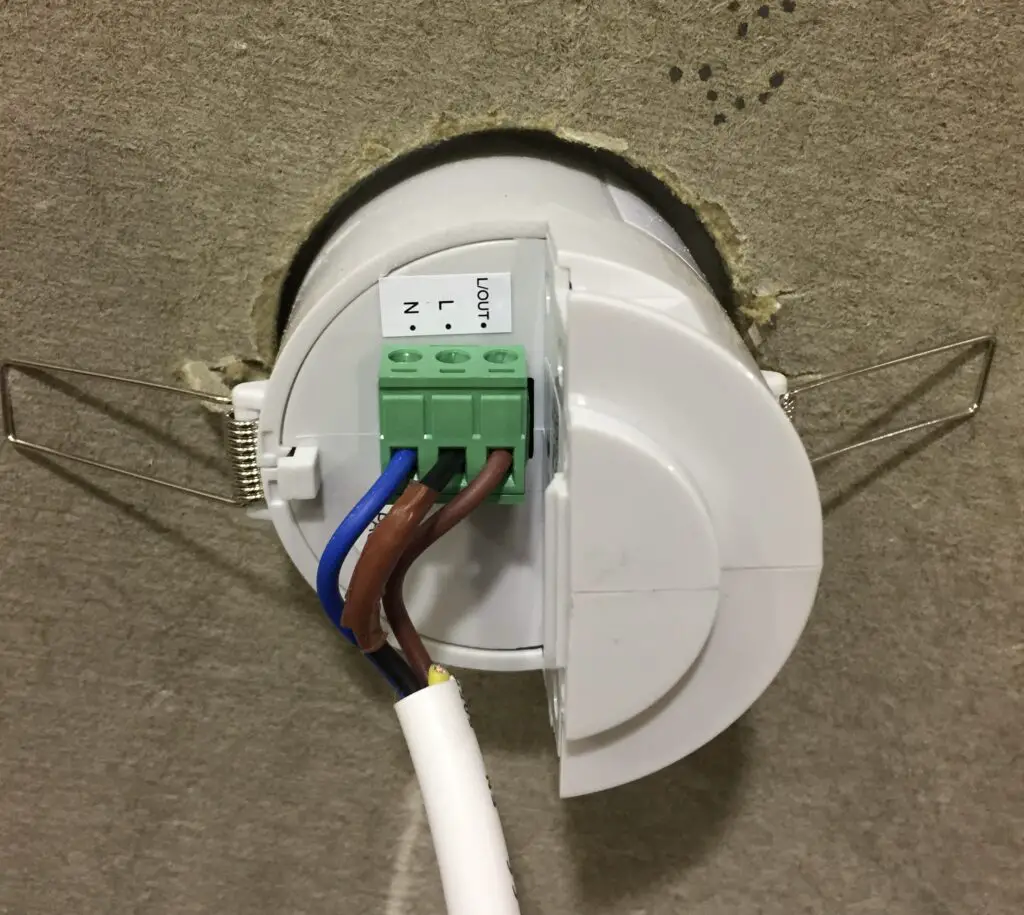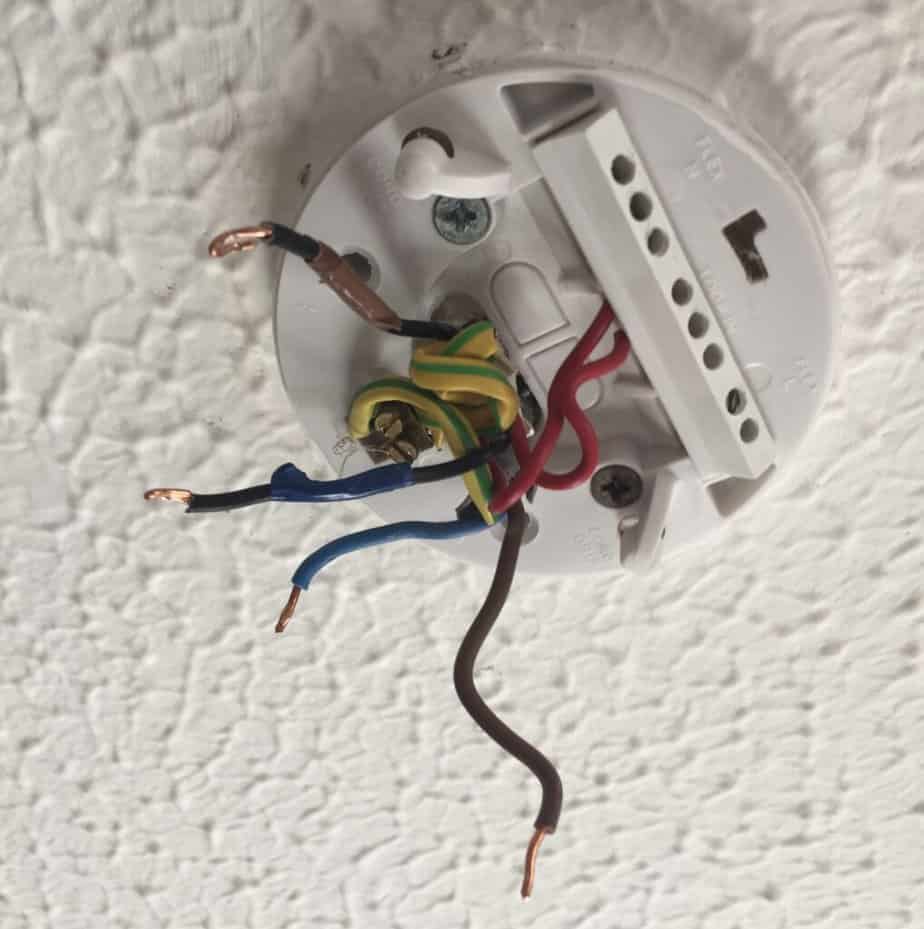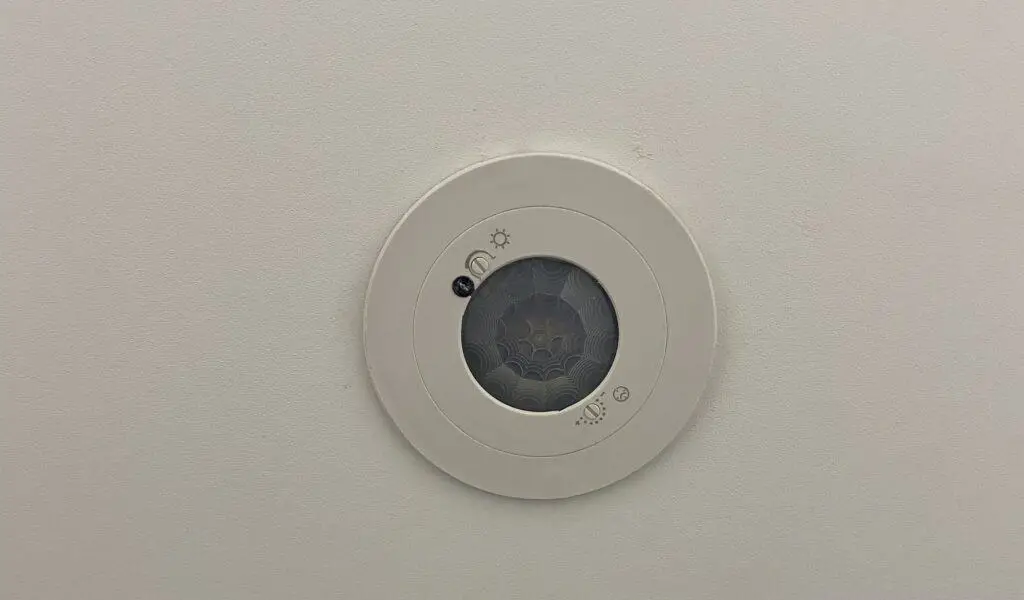PIR sensors have been around for many years and I have installed hundreds of them in my electrical career. I’m a big fan of the PIR sensor and the benefits that motion sensor control brings to lighting design.
Despite their many advantages, there are some common problems with PIR sensors that I see come up time and again. If you are considering switching (pardon the pun) to PIR sensor lighting or are having problems with a system you already have installed, I hope this post sheds some light on the situation (last poor pun I promise)

Some of the most common issues with PIR sensors that I come across as an electrician include inaccurate person detection, range limitations, and worn-out faulty sensors. Lately, pet immune motion detectors are also starting to show common faults.
These common problems cause false alarms, missed detections, or other issues that range from the slightly annoying to security or safety risks. Fortunately, for most common problems there are simple solutions to fix the issue. Let’s take a look at the 12 most common PIR sensor problems.
Incorrect Placement is the Most Common PIR Problem I Discover
One of the most common problems I come across with PIR sensors is incorrect placement. PIR sensors detect changes in infrared radiation within their field of view. If the sensor is placed in an area where the movement is outside its limited field of view then it cannot detect motion.
Below is a quick check homeowners can do on the placement of the PIR sensor. The fix may be as simple as adjusting the positioning.
| Mounting the sensor too high or too low | PIR sensors should be mounted at a height of around 2 to 2.5 metres (approx. 6 to 8 feet) above the ground. Mounting the sensor too high or too low can cause it to miss motion or detect false alarms. |
| Mounting the sensor near heat sources | PIR sensors can be triggered by heat sources such as patio heaters. It’s worth moving heat sources away from the PIR where possible. |
| Mounting the sensor in areas with obstructions | It may seem obvious, but unlike microwave sensors, PIR sensors rely on a clear line of view. Objects such as furniture or plants can cause the sensor to miss motion or detect false alarms. |
It’s always a good idea to try and test the sensor position before installation. Temporarily fix the sensor in position then walk around the area where the sensor will be installed to ensure that it can detect motion from all angles.
We often do this with corridor sensors by placing them on the floor and walking out of office doors to ensure the sensors will pick up the movement. Much easier than fixing the sensor to the ceiling and then having to move it and fill the screw holes back in!
Incompatibility with Smart Home Systems is a Developing Problem
A common problem with PIR sensors that is emerging is the fact that in reality, the technology used is actually quite old. Some people love tried and tested technology, they know it works well and it is inexpensive.
The downside is that PIR sensors are pretty basic by modern technology standards. As more homes and businesses lean towards smart lighting solutions, the limitations of the traditional PIR are frustrating.
On a personal note, especially in commercial environments, I favour wireless Bluetooth-controlled systems, Cassambi being my favourite as it is an open protocol system. The traditional PIR sensor has a common problem of not integrating with the new technologies (a feeling many Apple users know well)

To avoid compatibility issues, it is a good idea to research and choose motion sensors that are compatible with your smart home system. This can involve checking the sensor’s communication protocol and ensuring that it is compatible with the smart home system you are using. Taking time to research at the start before committing to a system can save a lot of heartache and expense.
Interference from Other Sources Can Cause PIR Problems
PIR sensors work by detecting changes in infrared radiation, which can be affected by other sources of infrared radiation, such as sunlight, heaters, and other electronics. When these sources emit infrared radiation, the sensor may detect it as a movement and trigger the light, even if it is unwanted.
It is possible for PIR sensors to be affected by temperature changes. If the temperature in the room changes rapidly, the sensor may detect it as a movement and trigger a light. It’s best to position the sensor away from any sources of heat or cold, such as air conditioning vents or windows.
Some PIR sensors come with filters that can help to reduce interference from other sources. This is one of the features of higher-end (and more expensive PIR sensors) Spending a little more on good quality equipment often benefits in the long run.
Limited Detection Range can be Frustrating
Although PIR sensors have been the workhorse of the motion sensor world for years, their limited detection range is a frustrating problem for many. Often on a dark evening, I am almost at my door before the PIR sensor on my outside floodlight detects my movement and guides the way.
The detection range of a PIR sensor can be affected by several factors, including the height at which it is mounted, the angle at which it is installed, and the sensitivity settings of the sensor. A balance of installation and correct set-up I’d required to make sure the sensor detects the area desired.
In addition, some PIR sensors have a limited detection angle, which can also affect their range. For example, a PIR sensor with a 90-degree detection angle will only be able to detect motion within a 90-degree arc. If an object is outside of this arc, the sensor will not detect it.

Common Complaint Number 5 of PIR Sensors: False Alarms
False alarms are a common issue with PIR sensors. Not only do they cause unnecessary disruptions, but if they are frequent they lead to a lack of trust in the system. We tend to stop getting up to check why the garden light has come on if it does it all the time.
There are several common reasons why PIR sensors may generate false alarms:
- Environmental factors such as changes in temperature, humidity, or airflow.
- Animals, bugs and insects can trigger PIR sensors.
- Obstructions or objects that move in the sensor’s field of view.
- Improper installation or calibration of the sensor.
It can be wise to address false alarms in order to maintain the effectiveness of the PIR system. Regular maintenance, such as cleaning away bugs and debris, can help reduce the occurrence of false alarms.
Power Issues can be Difficult Problems to Identify
PIR sensors require a stable power supply to function correctly. I do come across power problems quite often if someone has attempted a DIY install of a sensor without having quite enough knowledge on the subject.
Wiring problems can be straightforward to discover but other power issues, such as power supply noise for low-voltage sensors, can cause the sensor to behave erratically making diagnosing the cause feel like a wild goose chase at times. Here are some other common power issues.
| Underpowered sensor | If the sensor is not receiving enough power, it may not function properly. Different sensors operate at different voltage requirements. Ensure the correct voltage and current are used as specified in the datasheet. |
| Incorrect wiring | PIR sensors have multiple cable terminals and it is important to get the wiring correct or risk damaging the sensor. |
| Power supply noise | If the power supply is noisy, it can cause false activations or prevent the sensor from detecting motion. Use a low-noise power supply or add a filter to the power supply to reduce noise. |
| Loose connections | Loose connections can cause intermittent power issues not to mention a fire risk. |
Getting a local electrician to diagnose power issues with a PIR sensor is the most hassle-free and safest way to rectify these problems.
Sensor Age and Wear Causes Many PIR Problems
PIR sensors are electronic devices and like all electronic devices, they can be affected by age and wear. Over time, the sensor’s performance may degrade, leading to false readings or no readings at all.
As well as general wear and tear, physical damage, such as scratches or cracks, can reduce the sensor’s sensitivity or cause it to malfunction.
Regular cleaning and maintenance can help prevent wear and tear. It is surprising how often simply cleaning away the dust and debris on the sensor’s surface can give a PIR sensor a new lease of life.
It is also important to note that the sensor’s environment will affect its lifespan. Extreme temperatures, humidity, and exposure to sunlight can all cause the sensor to deteriorate faster so is worth bearing in mind when it comes time to replace.
Inadequate Calibration is More Common than you may Think
Whilst calibration sounds fancy, really calibration is just the process of adjusting the sensor to ensure that it is accurately detecting motion and not triggering false alarms. Inadequate (or often completely overlooked) calibration can result in the sensor being too sensitive or not sensitive enough, leading to common problems.

PIR sensors come with settings that can be adjusted, usually in the form of dials that we can place a screwdriver in to turn (as shown in the photo above) The settings can adjust things like sensitivity, time delay before switching off again and how dark it needs to be for the light to operate. If the light is over-sensitive adjusting the settings is the first port of call.
Common Problem Number 9: Compatibility Issues with Other Sensors
PIR sensors may not be able to detect motion when there is a lot of background noise or interference from other sensors. On a new installation, we would typically stick with one type of sensor but when retrofitting certain areas this may not be possible.
Compatibility issues can arise when using PIR sensors with other types of sensors, such as ultrasonic or microwave sensors. Whilst choosing the correct sensor for the location is important it can be a bit of a juggling act determining which sensors work best together and which sensors provide the most accurate activations.
Environmental Factors Always Need Considering
Environmental factors can significantly impact the performance of PIR sensors and shorten their lifespan. Here are a few of the most common environmental factors that can lead to issues.
| Temperature | Extreme temperatures (hot or cold) can cause PIR sensors to malfunction. If the temperature is too low, the sensor may not detect motion. If the temperature is too high, the sensor may detect false positives. |
| Humidity | High humidity levels can cause condensation to form on the lens of the sensor, which can interfere with its ability to detect motion. |
| Lighting | Bright lights, such as those from the sun or other sources, can cause false positives. Shadows and reflections can also cause false positives. |
| Noise | Electrical noise, such as that from nearby electrical equipment, can interfere with the sensor. |
If we need to install a PIR sensor in one of these harsher environments all is not lost, we just need to make sure the sensor we install is tougher and is built to withstand the environment. This is easily done by reading the manufacturer’s specifications carefully before buying.
Sensor Failure is a Common Problem after Extended Periods of Use
PIR sensor failure can occur for a number of reasons, such as age, damage, or manufacturing defects. When a sensor fails it can be especially irritating as often the occupiers are left in darkness. Having an override switch installed at the same time means that the lights can still be turned on.
Override switches are also a good idea if you want the ability to force the lights to stay on without motion, perhaps if out sat in the garden one evening as an example.
Installation Errors
Finally, we come to installation errors which are one of the most common PIR problems. Installation errors encompass many of the things we have mentioned previously. Often though installation errors go hand in hand with purchasing the incorrect sensor for what we want to achieve.
Different motion sensors, at different price points, will have different installation needs. For example, if we need more sensitivity or a longer range opting for a microwave sensor can make a lot of sense. If we want the ability to have more control, then absence detection may be the way to go.
